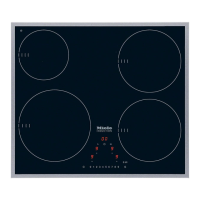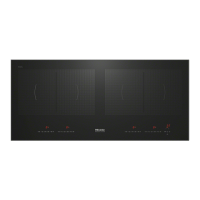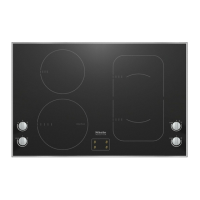What to do if my Miele Hob won't switch on?
- Jjoseph56Aug 6, 2025
If your Miele Hob won't switch on, it could be due to a tripped mains fuse. Reset the trip switch in the mains fuse box, ensuring the fuse rating meets the data plate specifications. Alternatively, there may be a technical fault. In this case, disconnect the hob from the electricity supply for about 1 minute by switching it off at the wall socket and unplugging it, or by switching it off at the isolator or disconnecting the mains fuse. Then, reset the trip switch and switch the appliance back on. If the hob still does not switch on, please contact a qualified electrician or the Miele Service Department.




